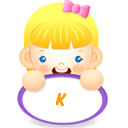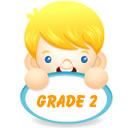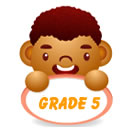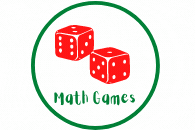What is Celsius into Fahrenheit?
In the world of temperature measurement, two scales are commonly used: Celsius and Fahrenheit. Each scale serves a specific purpose and is used in different parts of the world. Understanding how to convert between Celsius and Fahrenheit is essential for various applications, from cooking to scientific research. This article aims to provide a comprehensive guide on converting Celsius into Fahrenheit and vice versa, ensuring that you can easily navigate temperature conversions in your daily life.: Reception worksheets | Year 1 | Year 2 | Year 3 | Year 4 | Year 5 | Year 6 | Year 7 | Year 8 | Multiplication worksheets pdf | Counting to ten |
Preschool Worksheets

Preschool Math Worksheets - Counting, Addition, Subtraction, Geometry, & More. Colorful printable math tests.
Go to pageKindergarten Worksheets

Kindergarten Math worksheets- Addition, Subtraction, Probability, ,Fractions & More. Free math worksheets
Go to page1st Grade Worksheets

1st First Grade Math Worksheets - Counting, Addition, Geometry, Positions & More. First grade math worksheets
Go to page2nd Grade Worksheets

2nd Second Grade Math worksheets- Counting, Addition, Subtraction, Geometry, Positions & More. Grade 2 worksheets
Go to page3rd Grade Worksheets

3rd Third Grade Math Worksheets - Counting, Addition, Subtraction, Geometry, Positions & More. Grade 3 worksheets pdf
Go to page4th Grade Worksheets

4th Fourth Grade Math worksheets- Counting, Addition, Subtraction, Geometry, Positions & More. grade 4 math worksheets
Go to page5th Grade Worksheets

5th Fifth Grade Math Worksheets - Counting, Addition, Subtraction, Geometry, Positions & More. grade 5 math worksheets
Go to page6th Grade Worksheets

6th Sixth Grade Math Worksheets - Counting, Addition, Subtraction, Geometry, Positions & More. Grade 6 math worksheets
Go to page7th Grade Worksheets

7th Seventh Grade Math Worksheets - Addition, Subtraction, Geometry, Positions & More. Grade 7 math worksheets
Go to pageUnderstanding Celsius and Fahrenheit
Before diving into the conversion process, let's briefly explore the Celsius and Fahrenheit scales.
Celsius Scale
The Celsius scale is a metric temperature scale commonly used in most countries around the world. It is based on the concept of defining the freezing point of water at 0 degrees Celsius (°C) and the boiling point of water at 100 degrees Celsius. The Celsius scale divides this range into 100 equal parts, making it a decimal scale that is easy to work with in scientific calculations.

Worksheets: Class 1 | Class 2 | Class 3 | Class 4 | Class 5 | Class 6 | Worksheet Generator |
Fahrenheit Scale
The Fahrenheit scale is predominantly used in the United States and a few other countries. It was developed by Daniel Gabriel Fahrenheit in the early 18th century. Unlike the Celsius scale, the freezing point of water is set at 32 degrees Fahrenheit (°F), while the boiling point is defined as 212 degrees Fahrenheit. The Fahrenheit scale divides this range into 180 equal parts.
Converting Celsius to Fahrenheit
Converting Celsius to Fahrenheit requires a simple mathematical equation. To convert a temperature in Celsius (°C) to Fahrenheit (°F), follow these steps:
- Take the temperature in Celsius (°C).
- Multiply it by 9/5 (or 1.8).
- Add 32 to the result.
The formula can be expressed as:
mathematica°F = (°C × 9/5) + 32
For example, let's convert 25 degrees Celsius to Fahrenheit:
r°F = (25 × 9/5) + 32 °F = 45 + 32 °F = 77
Therefore, 25 degrees Celsius is equivalent to 77 degrees Fahrenheit.
Converting Fahrenheit to Celsius
To convert Fahrenheit to Celsius, the reverse process is followed. Use the following steps:
- Start with the temperature in Fahrenheit (°F).
- Subtract 32 from the Fahrenheit temperature.
- Multiply the result by 5/9.
The formula can be expressed as:
mathematica°C = (°F - 32) × 5/9
Let's convert 98 degrees Fahrenheit to Celsius:
mathematica°C = (98 - 32) × 5/9 °C = 66 × 5/9 °C = 30
Hence, 98 degrees Fahrenheit is equal to 30 degrees Celsius.
The Importance of Temperature Conversion
Temperature conversion between Celsius and Fahrenheit is essential for several reasons:
-
International Communication: As different countries use different temperature scales, conversions ensure effective communication in various fields like weather reporting, scientific research, and global commerce.
-
Cooking and Baking: Many recipes from around the world provide temperature instructions in Celsius or Fahrenheit. Converting temperatures accurately is crucial for successful cooking and baking.
-
HVAC Systems: Heating, ventilation, and air conditioning systems often provide temperature readings in both Celsius and Fahrenheit. Understanding these readings helps in maintaining comfortable indoor environments.
Practical Applications of Celsius and Fahrenheit Conversion
Temperature conversions are utilized in various practical scenarios. Some common applications include:
-
Traveling: When traveling to a country that uses a different temperature scale, converting temperatures helps in understanding weather forecasts and adjusting clothing accordingly.
-
Medical Measurements: Temperature measurements in medical settings may use either Celsius or Fahrenheit. Converting readings allows healthcare professionals to communicate and interpret data accurately.
-
Scientific Research: In scientific experiments and research, temperature scales play a vital role. Converting temperatures ensures compatibility and consistency in data analysis.
-
Manufacturing Processes: Certain industrial processes require specific temperature conditions. Accurate conversions between Celsius and Fahrenheit are necessary for quality control and maintaining desired parameters.
Conclusion
In conclusion, understanding how to convert Celsius into Fahrenheit and vice versa is essential for everyday life. Whether you're cooking, traveling, or working in scientific fields, temperature conversions play a crucial role. By following the simple formulas provided, you can easily convert temperatures between the Celsius and Fahrenheit scales. Embrace the versatility of both scales and navigate the world of temperature measurements with confidence.
Frequently Asked Questions (FAQs)
Q1: Why do some countries use Celsius while others use Fahrenheit? Different countries adopted different temperature scales based on historical conventions and preferences. The Celsius scale is commonly used worldwide due to its simplicity and connection to the metric system, while the Fahrenheit scale persists in certain regions due to tradition and familiarity.
Q2: Can I use an online temperature conversion tool? Yes, there are numerous online tools available that can quickly convert temperatures between Celsius and Fahrenheit. However, it's beneficial to understand the conversion process to double-check the accuracy of these tools.
Q3: Are there other temperature scales apart from Celsius and Fahrenheit? Yes, there are alternative temperature scales such as Kelvin and Rankine. Kelvin is widely used in scientific and engineering applications, while Rankine is primarily used in the field of thermodynamics.
Q4: Is there an easy way to estimate temperature conversions without using a formula? As a rough estimate, you can use the fact that 30 degrees Celsius is approximately 86 degrees Fahrenheit. This approximation can provide a general idea of the temperature conversion between the two scales.
Q5: How do I convert negative temperatures between Celsius and Fahrenheit? The conversion formulas remain the same for negative temperatures. Simply plug in the negative temperature value into the formula, and the calculations will yield the corresponding temperature in the other scale.
25 Celsius Fahrenheit
Introduction
When it comes to measuring temperature, different regions of the world use different scales. Two commonly used temperature scales are Celsius and Fahrenheit. In this article, we will explore the conversion between these two scales and gain a better understanding of how temperature is measured. So, let's dive in!
Factors Influencing Temperature Measurement
Several factors can influence temperature measurements, such as altitude, atmospheric pressure, humidity, and calibration of measuring instruments. It is essential to consider these factors while interpreting temperature readings accurately.
Applications in Everyday Life
Temperature conversion is useful in our daily lives. Whether it's setting the thermostat, cooking, or determining appropriate clothing for the weather, understanding temperature in different scales helps us make informed decisions.
Impact of Temperature on Human Health
Temperature plays a significant role in human health. Extreme temperatures, whether hot or cold, can affect our bodies and well-being. Understanding temperature conversion helps us monitor and adapt to varying environmental conditions for better health management.
Temperature Conversion in Science and Engineering
In scientific and engineering disciplines, accurate temperature conversion is vital for conducting experiments, analyzing data, and designing systems. Different industries rely on precise temperature measurements to ensure safety, quality control, and optimal performance of various processes.
Historical Development of Temperature Scales
The Celsius and Fahrenheit scales have evolved over time, with contributions from multiple scientists and inventors. Understanding the historical context of these scales provides valuable insights into the development of scientific knowledge and advancements in temperature measurement.
Common Misconceptions about Temperature Conversion
There are several misconceptions and myths surrounding temperature conversion. It's important to debunk these misunderstandings and promote accurate information to enhance scientific literacy among the general public.
The Role of Temperature in Weather Forecasting
Temperature is a key component in weather forecasting models. Accurate temperature measurements and conversions help meteorologists predict weather patterns, understand climate trends, and issue timely warnings to safeguard lives and property.
Climate Change and Temperature Trends
With the growing concern about climate change, analyzing temperature trends has become crucial. Temperature conversion allows scientists to compare historical data, monitor temperature fluctuations, and assess the impact of climate change on our planet.
The Future of Temperature Measurement
As technology advances, temperature measurement techniques continue to evolve. Innovations in sensors, nanotechnology, and data analysis offer exciting possibilities for more precise and efficient temperature measurements in the future.
Conclusion
Understanding temperature conversion between Celsius and Fahrenheit is essential for effective communication and accurate interpretation of temperature data. Whether you're planning a trip, conducting scientific research, or simply curious about the weather, knowing how to convert temperatures opens up a world of information and possibilities.
FAQs (Frequently Asked Questions)
-
Q: How do I convert Celsius to Fahrenheit?
- A: To convert Celsius to Fahrenheit, use the formula: °F = (°C * 9/5) + 32.
-
Q: What is the freezing point of water in Fahrenheit?
- A: The freezing point of water is 32°F on the Fahrenheit scale.
-
Q: Why are there different temperature scales?
- A: Different regions and cultures adopted different temperature scales based on historical and practical reasons.
-
Q: Is there a universal temperature scale?
- A: No, there is no universal temperature scale. However, the Celsius scale is widely used in scientific and international contexts.
-
Q: How does temperature affect our daily lives?
- A: Temperature influences various aspects of our lives, including comfort, health, and the natural environment.
![]() 8th Eight Grade Math Worksheets - Polynomials, Algebra, Geometry, Pythagorean Theory, & more
8th Eight Grade Math Worksheets - Polynomials, Algebra, Geometry, Pythagorean Theory, & more
![]() Coloring and Arts - Printable coloring worksheets for kids - Pre K to 6 th grade
Coloring and Arts - Printable coloring worksheets for kids - Pre K to 6 th grade
![]() Math Puzzles in PDF Printable Format - Secret trails, Across downs, Number Patterns & more
Math Puzzles in PDF Printable Format - Secret trails, Across downs, Number Patterns & more
![]() Math Board Games in PDF Printable Format - Zombie, Crocodile, Football, Pirate games & more
Math Board Games in PDF Printable Format - Zombie, Crocodile, Football, Pirate games & more
 This exercise will help kids practice Math in a fun way. Kids related to games very well. From preschool / kindergarten to sixth grade levels of math games. There are games for the following topics:
This exercise will help kids practice Math in a fun way. Kids related to games very well. From preschool / kindergarten to sixth grade levels of math games. There are games for the following topics:
The games include among other : memory games, Walk the plank, Fling the Teacher, En Garde Duel, Basketball Game, Penalty Shoot and more.
